The first of its kind grant program will help recipients across North America further invest in their small businesses and the communities they serve Jobber, the leading provider of home service management software, today announced the recipients of its $150,000 grant program, Boost by Jobber. Thirty small businesses were selected from thousands of applications and Read more
COVID

The first of its kind grant program will help recipients across North America further invest in their small businesses and the communities they serve
Jobber, the leading provider of home service management software, today announced the recipients of its $150,000 grant program, Boost by Jobber. Thirty small businesses were selected from thousands of applications and received funds ranging between $1,500 to $20,000 USD.
“From experienced entrepreneurs to those starting a new career in home service, all our Boost by Jobber recipients are unique—but the incredible impact they’re making on their local communities is something they all share,” said Sam Pillar, CEO & co-founder at Jobber. “Our team was truly inspired by the entrepreneurial stories and demonstrations of resiliency that were shared with us. Home service businesses are made up of incredible people and hometown heroes that deserve to have a spotlight on their work, their stories heard, and our continued support. This is our goal for the Boost by Jobber program.”
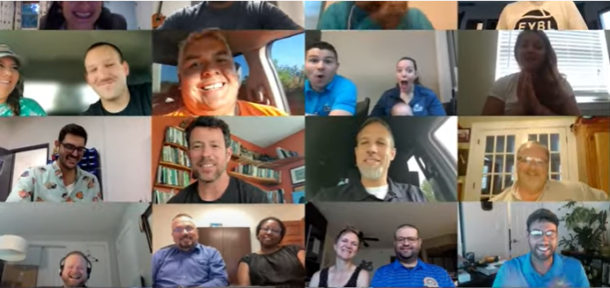
The grant recipients range from pre-business entrepreneurs to experienced owners and represent a variety of home services industries, including tree care, lawn care and landscaping, plumbing, residential cleaning, HVAC, contracting, carpentry, pressure washing, and more. These funds will help support entrepreneurs in the home services category who keep our homes and offices running smoothly, help their friends and neighbors build meaningful careers, and give back to the communities where they live and work.
The application process involved written and video submissions, followed by interviews with Boost by Jobber’s judging panel. To select the recipients, Jobber individually scored applicants based on their community contributions, leadership style, business plans, and the overall impact the funding would make towards their goals.
The top grant of $20,000 was awarded to experienced entrepreneur Joseph Gillingham, founder of Heritage Tree Care. Gillingham started his company, a full service tree care business, 15 years ago and now employs 20 people during peak seasons. The company has helped create interactive outdoor learning spaces for local schools and daycares by donating labor and repurposed wood chips, logs for seating, and large outdoor wooden building blocks for children to play with, all while maintaining 5-star customer service. The company also supports a network of community gardens and assists with emergency response for urban animals requiring rescue from heights.

“Receiving this Boost by Jobber grant makes it all worthwhile in a way,” said Joseph Gillingham. “As an entrepreneur, sometimes I wonder if I am doing the right thing as there is often a residual feeling of imposter syndrome despite the thousands of happy customers over lots of years. Getting recognized in this way takes away the doubt. Thanks to Jobber, we can bring some of our dream entrepreneurial ideas to life. With this funding, we will not only grow the business and hire more expert team members, but also we plan to help subsidize tree planting for low-income daycares and community centers, thereby creating a green legacy of shady spaces throughout my city and beyond.”
New entrepreneurs Courtney and Burgess Heberer, owners of Santa Claus Exterior Cleaning, received a $10,000 grant. Courtney has been a middle school music teacher and Burgess previously worked as a scientist developing infant formula and childrens’ nutritional products. Santa Claus Exterior Cleaning donates 10% of profits to children in need around the holidays, and also cleans and sanitizes four local public school playgrounds at no charge.
“The Boost by Jobber grant was really needed,” said Burgess Heberer. “We are at this point where we are ready to take things to the next level and move our business out of our garage and into its own dedicated space. This grant is going to help us do that. It’s a big step forward— and to know your hard work is acknowledged by a partner like Jobber is awesome.”
Courtney added, “We took a big risk starting this business, so this is very reassuring. We can’t say enough good things about the team at Jobber.”
Below is the full list of 30 recipients for this year’s Boost by Jobber grant program from across North America:
Experienced Business Owners (3+ years):
- Joseph Gillingham, Heritage Tree Care Inc. (Toronto, ON)
- Monique Olson and Erik Olson, Safe N Soft Carpet Cleaning (Boise, ID)
- Amber Starling, Good Witch Cleaning Services LLC (Manhattan, KS)
- Branden Sewell, Seal Pro Painting Inc. (Orlando, FL)
- Bryon Rocz, Father & Son Restoration (Taylor, MI)
- Kirk Brown, Kirk’s Lawn Care LLC (Limerick, PA)
- Lauren Penner and Julie Penner, Unaffiliated Hot Tub Home Care (Saskatoon, SK)
- Chris Senger, Errol Palmer and Dane Findlay, Mow Town Edmonton Ltd. (Edmonton, AB)
- Jessica Bilmer and Jonathan Alvernaz, Kitchen Makeovers (Aldergrove, BC)
- Dave Clauson, Cove Power (North Vancouver, BC)
New Business Owners (0-3 years):
- Courtney Heberer and Burgess Heberer, Santa Claus Exterior Cleaning LLC (Santa Claus, IN)
- Raquel Hughes and Aaron Kirkaldy, Sparkle & Sheen Organize and Cleaning Services Ltd. (Edmonton, AB)
- Donny Mills, Liberty Village Plumbing (Toronto, ON)
- Eric Kleynenberg, Alpha Repair and Renovation LLC (Caledonia, MI)
- Meaghan McVicker, Green Clean Machine (Nipomo, CA)
- Nolan Rinta and Taylor Rinta, T-Rex Rinks (Stillwater, MN)
- Amy Morgan and Cody Morgan, Pit Stop Pool Service (Cypress, TX)
- Bernard Jackson, BLE Management LLC (Fayetteville, NC)
- Alberto Herrera, Exin Car Detail (Tempe, AZ)
- Riley Flatt and Brittany Flatt, Semper Fi Heating & Cooling (Malta, MT)
Almost Entrepreneurs (pre-business):
- Kevin Long, Fall Creek Power Wash, LLC (Pendleton, IN)
- Findley Wilson, Fin’s Custom Builds (Ohsweken, ON)
- Crystal Bissell, Eco Food Gardens (Austin, TX)
- Jacob Micflikier and Alysha Murdoch, Seed Cleaning & Services LLC (Destin, FL)
- Ben Clark, CSRA Bin Cleaning (North Augusta, SC)
COVID-19 Support:
- Lisa Sullivan and John Sullivan, Heather Ridge Contractors Inc. (North Riverside, IL)
- Ana Lupu and Horea Lupu, FloorMaxx Inc. (Chicago, IL)
- Paddy Treacy, Northern Lines (Toronto, ON)
- Fatukanu Kabia, Diamond Janitorial Services (Anchorage, AK)
- Adrienne Tutty, Calavo Landscape Inc. (El Cajon, CA)
To learn more about the Boost by Jobber recipients and their stories, and to watch for updates around next year’s program, visit https://www.boostbyjobber.com/

We know that plumbing is a competitive industry. But we also know that there are plenty of ways to stand out from the competition. COVID-19 has created a more competitive environment for plumbers, with industry revenue down 5.3 per cent across 2020/21, resulting in $15.9 billion lost to the industry. In addition, the plumbing industry Read more
We know that plumbing is a competitive industry. But we also know that there are plenty of ways to stand out from the competition.
COVID-19 has created a more competitive environment for plumbers, with industry revenue down 5.3 per cent across 2020/21, resulting in $15.9 billion lost to the industry. In addition, the plumbing industry is set to take a further hit following the conclusion of the lucrative Federal Government’s HomeBuilder scheme.
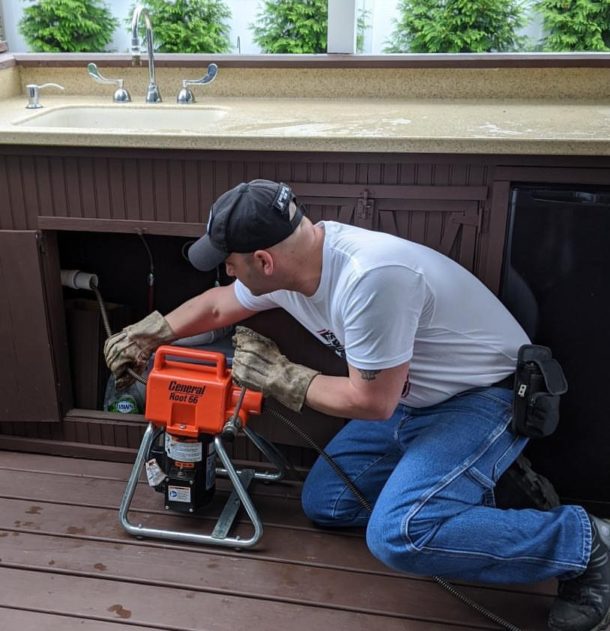
Despite these challenges, there were 90,800 Plumbers in 2020, which is expected to rise to 96,500 by 2025 – creating an even more competitive environment. That means it is vital to do everything possible to promote your business to stay ahead of the competition. Here are some ways you can rise to the top.
Adopt The Latest Plumbing Technology
There are many benefits of adopting the latest plumbing technology. One is that it will help your business save money on water and energy bills. Another advantage is that it will make your life easier with less time spent on maintenance and repairs. You’ll also be able to provide better customer service, which in turn means more revenue for your company.
Investigate technologies like smart shower, toilet and irrigation systems that can be controlled with a mobile device, energy-efficient water heating devices and get the right tools for water leak detection in Melbourne. Technology is updating all the time, so it’s important that you stay up-to-date.
The modern household has a thirst for energy and water-efficient technologies that are better for the environment. Over 12 per cent of all houses globally are already smart homes, and it has become a 99.41 billion USD global industry. With more consumers changing their purchasing behaviors to be more sustainable, our plumbing business must move with the times.
Create a Website That is Designed to Attract Customers
Do you need a new website for your plumbing company? Traditionally those in the trades industry have not prioritized their digital presence, but today it is essential with most consumers using the internet to discover plumbers in their local area.
Older generations may still rely on word of mouth and numbers listed in directories; younger generations are heading directly to Google to find trades services. Considering that three-quarters of the Australian public will require plumbing services in the next 12 months, it is a market too big to ignore.
Websites are the backbone of any business. They’re how people find you, learn about what you do, and decide if they want to work with you. That’s why it’s essential to have a professional-looking site that will increase your visibility and credibility to help get more leads.
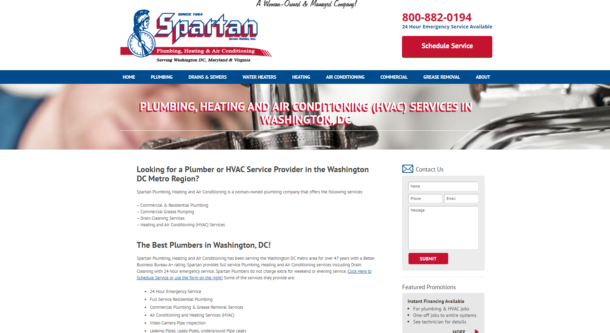
Build Your List of Positive Online Reviews
While the modern consumer looks for plumbers online, referrals still play an enormous role in the industry – they have just moved online.
Reviews are the best way to show potential customers that your company is worth their time and money. They help establish credibility and trust in your local community and separate you from cowboy operators without licenses that could potentially rip consumers off.
It would be best to encourage all of your customers to leave Google reviews on your business to help promote your brand. The more positive reviews you get, the better you will be perceived in your local community and the more jobs.
What happens when people leave bad reviews? The worst thing you can do is ignore it. Instead, respond to all negative reviews and ask how to remedy the problem and improve their experience. This is a surefire way to flip around negative sentiment into positivity.
When you consider that over 90 per cent of consumers regularly or occasionally read reviews and 84 per cent trust them as much as a personal recommendation, it is a method of promoting your business that you can’t ignore.
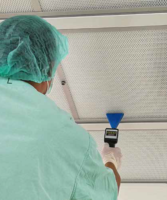
The report to the President of the United States examines how buildings can protect and promote public health The National Institute of Building Sciences Consultative Council has issued its 2020 Moving Forward Report, looking closely at the importance of healthy buildings. The report examines how buildings can protect and promote public health, providing recommendations for President Biden Read more
The report to the President of the United States examines how buildings can protect and promote public health
The National Institute of Building Sciences Consultative Council has issued its 2020 Moving Forward Report, looking closely at the importance of healthy buildings.
The report examines how buildings can protect and promote public health, providing recommendations for President Biden and policymakers on three components of healthy buildings: indoor environmental quality, the importance of design in promoting health, and promoting knowledge transfer between building owners and public health officials.
“Ensuring that the spaces where we live and work are healthy and safe for continued occupancy is critical to overcoming the pandemic,” said Lakisha A. Woods, CAE, President and CEO of NIBS. “This is a fundamental pillar of public health and community resilience. The concept of healthy buildings goes well beyond continual sanitation of a building’s indoor environment to eliminate pathogens.”
The NIBS Consultative Council assembles high-level building community leaders to make collective recommendations directly to the President of the United States and policymakers to improve our nation’s buildings and infrastructure.
Among the recommendations in the report:
- The Administration, U.S. Department of Energy (DOE), The Centers for Disease Control and Prevention (CDC), U.S. Environmental Protection Agency (EPA), National Institute of Standards and Technology (NIST) and other relevant federal agencies should increase investment into critical research on the impacts of indoor environmental quality (IEQ) and resilience on health and productivity. Of particular importance is research into how retrofits to the nation’s existing building stock can be used to improve IEQ.
- Federal agencies, including DOE, NIST, EPA, General Services Administration (GSA), and United States Department of Housing and Urban Development (HUD), should support research aimed at identifying improvements to building codes and other criteria that can provide cost-effective approaches to enhanced building performance. This should include opportunities to shorten the regulatory and code development process, and enable it to be more anticipatory of current and future disruptions to public health.
- Congress, U.S. Department of Transportation, HUD, DOE, Federal Emergency Management Agency and EPA, with input from the community-based organizations, advocates, and the private sector, should identify and enact policies, including incentive programs, that encourage building owners and operators to invest in critical activities that promote healthy IEQ. Clean water, healthy high-performing buildings, clean interior and exterior air, and fair and equitable access to healthy and resilient places are critical components of our nation’s infrastructure. Particular incentive should be given to supporting improvements in disadvantaged communities or populations that are impacted by flaws in existing structures, those constructed with unsafe or toxic materials, or that present unsafe living or working conditions to occupants.
Visit the Consultative Council for more information or to read the full report.

The Covid-19 pandemic caused widespread disruption but many businesses are now looking forward to a new post-Covid era. As restrictions ease and case numbers start to fall, there are opportunities to learn from the outbreak. In this guide, we’ll discuss ways to create a more profitable, efficient plumbing firm. Equipment, technology and parts We are Read more
The Covid-19 pandemic caused widespread disruption but many businesses are now looking forward to a new post-Covid era. As restrictions ease and case numbers start to fall, there are opportunities to learn from the outbreak. In this guide, we’ll discuss ways to create a more profitable, efficient plumbing firm.
Equipment, technology and parts
We are more reliant on technology than ever before. Over the last 12 months, businesses across all sectors depended on technology to stay afloat. As the owner of a plumbing company, it’s hugely beneficial to capitalize on the benefits of investing in technology and equipment. Technology enables plumbing firms to communicate with remote teams and clients seamlessly without engaging in face-to-face meetings and it can also provide safety benefits and improve efficiency by saving time and money.
If you own a plumbing firm, it’s useful to conduct an audit and keep a close eye on new developments and innovations, as well as tracking your competitors. Look for investments you could make to streamline operations, save time and promote safety and work with suppliers and other companies that have a track record for providing high-quality components, parts and services. From an air cylinder and new pipework to innovative tools that provide solutions for hard-to-reach areas or complex jobs, it pays to take the time to research and compare suppliers and figure out what kinds of investments will drive your business forward.
Targeted marketing
Most businesses rely on marketing to get their brand name out there and encourage customers to get in touch. If you run a plumbing firm, using targeted marketing techniques can help to improve ROI. For plumbing businesses, social media and local SEO can be incredibly effective. It’s also beneficial to ask customers to leave reviews. Over 90% of consumers read online reviews before contacting businesses and over 85% of smartphone users will either call or visit a business within 24 hours of conducting a local search. Define your ideal customers, find out how they spend their time online and consider combining digital and traditional marketing methods. Local SEO, social media and content marketing and paid ads can all help to boost lead creation alongside local press adverts and flyers.

Options for customers and employees
Agility is key for businesses trying to thrive during the pandemic. While many firms will be keen to get back to ‘normal’ ways of working, it is beneficial to adapt and modify the way you interact with customers and provide services to cater to consumer demands and trends. You could save time and money and ensure customers feel safe by offering telephone or virtual consultations, for example. It’s also beneficial to consider staffing and how your teams operate. Remote work has become much more commonplace. Switching to more flexible structures may allow you to save money on renting offices or communal workspaces at the same time as giving your workforce more flexibility.
The pandemic has been incredibly challenging for businesses but there are silver linings. If you run a plumbing firm, it’s wise to approach the months ahead with a desire to create a more profitable, efficient business.
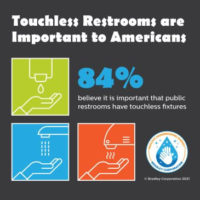
According to a national survey by Bradley Corp., half of the population continued to use public restrooms throughout the pandemic. Just 13% of Americans said they completely avoided using a public restroom while 50% visited restrooms just as they always had. Another 37% said they were uncomfortable but had, at times, utilized a public restroom Read more
According to a national survey by Bradley Corp., half of the population continued to use public restrooms throughout the pandemic. Just 13% of Americans said they completely avoided using a public restroom while 50% visited restrooms just as they always had. Another 37% said they were uncomfortable but had, at times, utilized a public restroom when necessary.
The most common places where Americans used a public restroom were stores, restaurants and their workplace. The majority who visited public restrooms took precautions to reduce their likelihood of coming in contact with germs. 63% had ahold of a paper towel as a protective barrier when they operated the toilet flusher and faucet handles or reached for door handles. Alternately, another group employed their foot to flush the toilet or opened and closed doors with their butt.
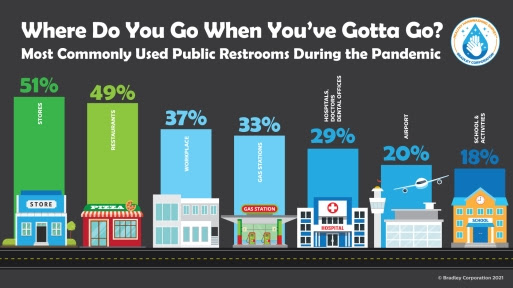
The annual Healthy Handwashing Survey from Bradley Corp. queried 1,050 American adults regarding their public restroom usage, handwashing habits and concerns about the coronavirus and flu. Participants were from around the country and were evenly split between men and women.
Strong Preference for Touchless
Since Americans have relied on evasive measures to avoid germs in public restrooms, it’s not surprising that 84% believe it’s important to have touchless fixtures. In fact, nearly 70% say they’re more likely to return to a business that has touchless restroom features. On the other hand, 56% have a negative impression of a business that doesn’t have touchless fixtures.
When it comes to which fixtures Americans prefer to be touchless, the toilet flusher, faucets and entrance doors top the list.
“Touchless restroom fixtures add a significant level of comfort for Americans when they’re out and about and need to use a public restroom,” says Jon Dommisse, director of strategy and corporate development for Bradley Corp. “We’ve all become more cognizant of potentially germy touch points so eliminating an area of concern is another way we can help resume our normal lives again.”

Germ Concerns Significant
The Healthy Handwashing Survey, which was conducted in January 2021, found that 86% of Americans are more conscious about coming in contact with germs as a result of the Coronavirus.
That concern has led to a spike in handwashing and hand drying. The survey revealed that nearly 90% are washing their hands more frequently or more thoroughly as a result of the Coronavirus. In terms of frequency, 57% are sudsing up between six to 15 or more times a day. And, 73% are drying their hands more frequently or more thoroughly.
That’s significant because hand drying is an important step in the handwashing process. The Centers for Disease Control and Prevention (CDC) explains that, “Germs can be transferred more easily to and from wet hands; therefore, hands should be dried after washing.”
Overall, Americans correctly believe handwashing is a better germ-fighter than hand sanitizer. 61% understand their hands are less germy after washing with soap and water than after using hand sanitizer – a fact supported by the CDC. For times when soap and water are not available, the CDC says that using hand sanitizer is a good, second option for hand hygiene.
“Handwashing remains one of the easiest and most effective ways to stay healthy and reduce the likelihood of spreading germs or viruses to others,” says Dommisse. “When you pair soap and water with vigorous and thorough scrubbing, you’re literally removing and sending bacteria and germs down the drain.”
For more information, visit bradleycorp.com/handwashing.
